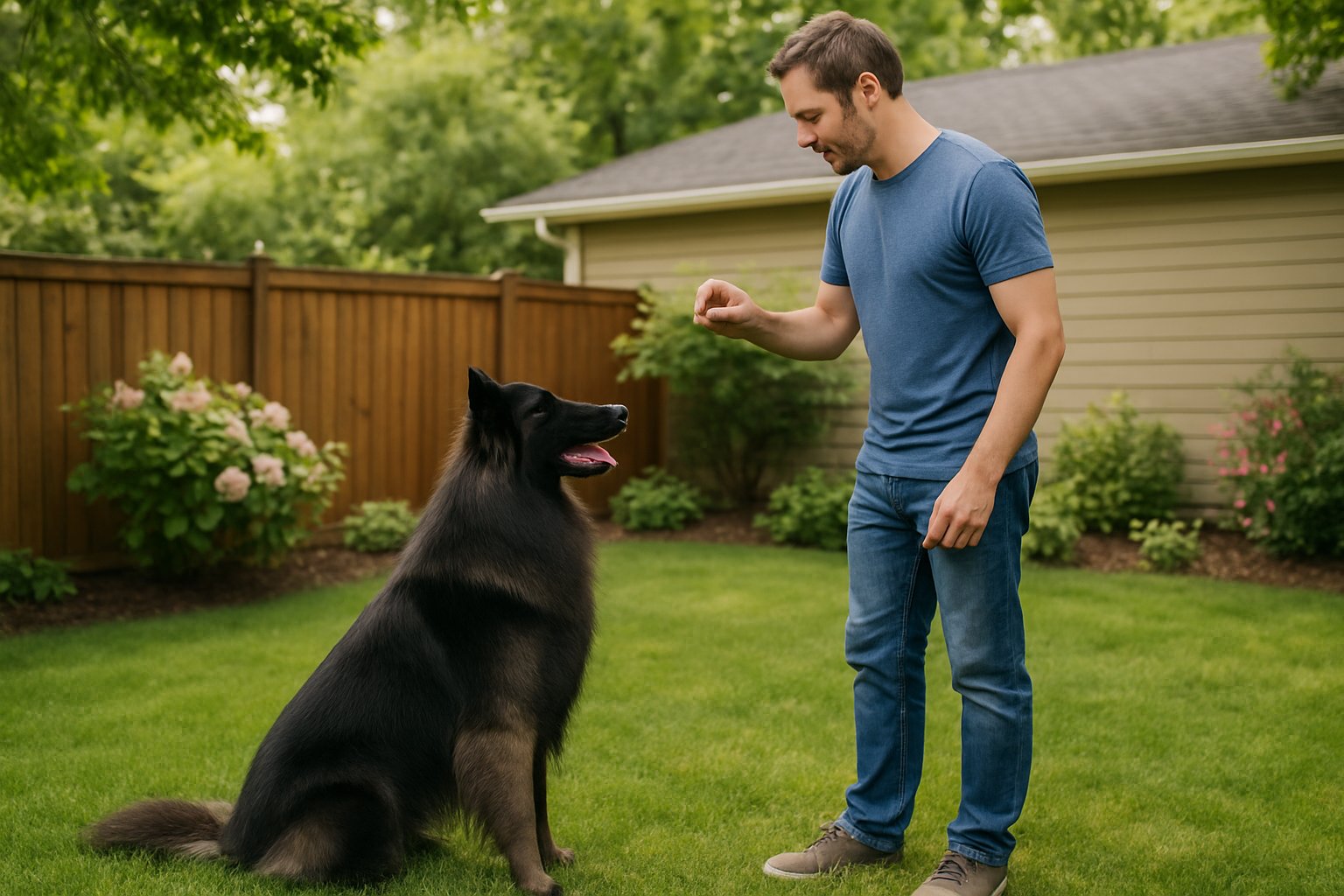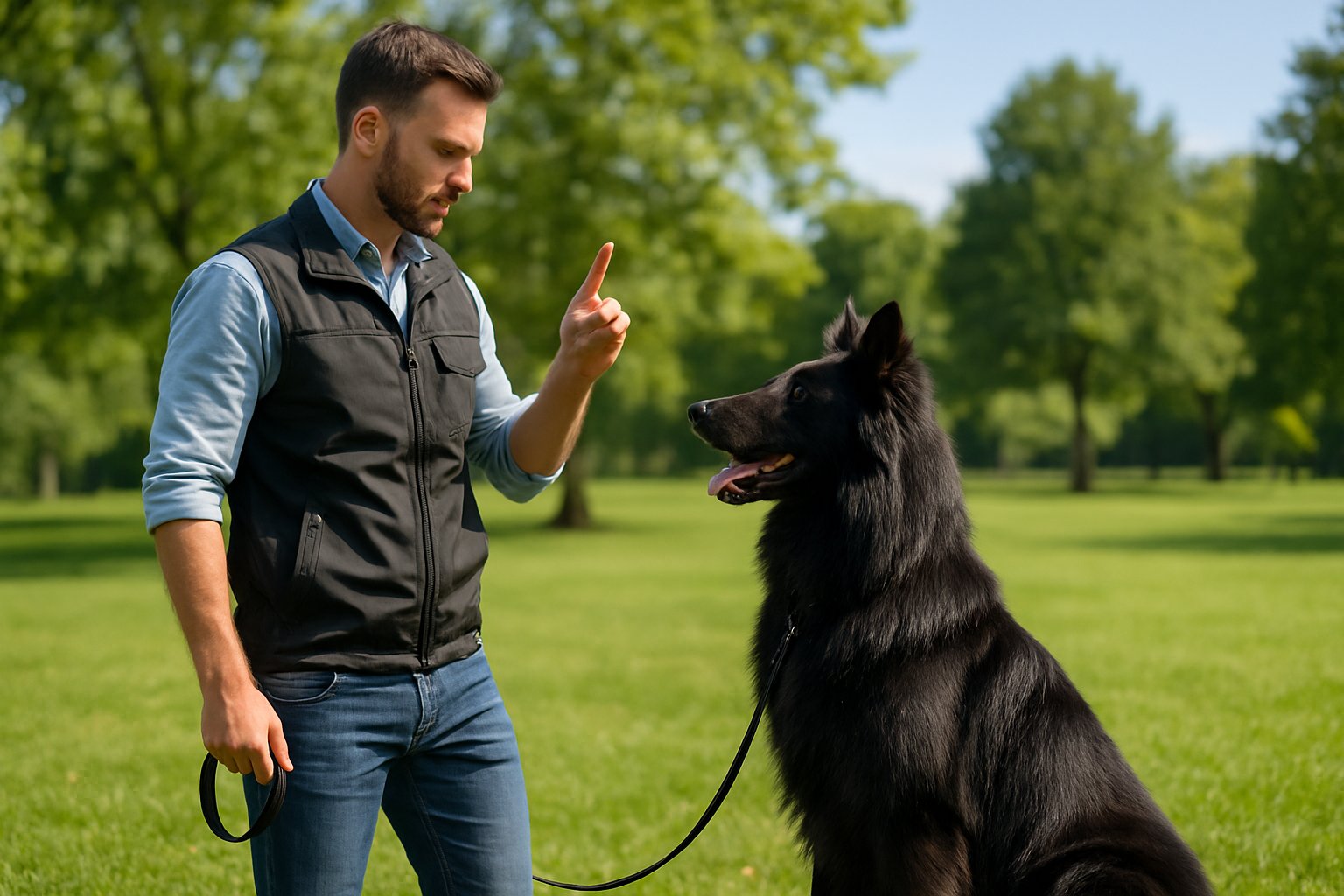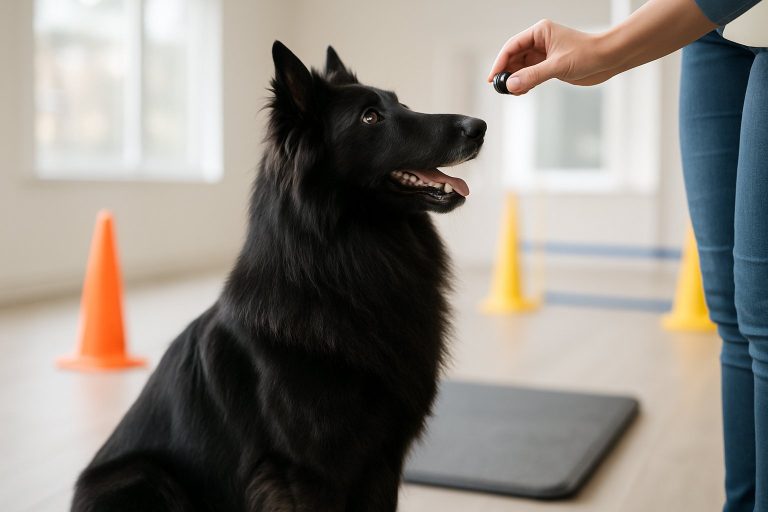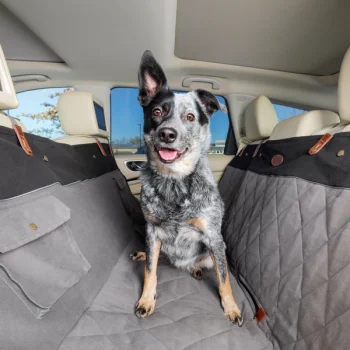Owning a Belgian Sheepdog comes with both joy and responsibility. These intelligent dogs need guidance to become well-mannered companions at home or in public spaces.
Learning the right training tips helps you build a better bond with your Belgian Sheepdog and helps them follow your instructions. Good training keeps your dog happy, safe, and easy to live with.
1. Use positive reinforcement with treats and praise to encourage obedience
Positive reinforcement is a proven method for training Belgian Sheepdogs. This approach means you reward good behavior with treats or praise, making that behavior more likely to be repeated in the future. Rewards help your dog understand which actions you want to see. Belgian Sheepdogs are smart and eager to please, so they respond well to consistent rewards. Use small, healthy treats and give them right after your dog obeys a command. Pair treats with gentle praise, like “Good dog!” or a happy tone, to boost motivation.
2. Start training sessions in a quiet, familiar environment like the house or yard
- Begin your Belgian Sheepdog’s training where there are few distractions. A calm environment helps them focus on what you are teaching. Your home or yard is a great place to start since your dog already feels comfortable there.
- Training in familiar areas can lower stress for your dog. New sounds or sights can make it hard for them to pay attention.
- Once your Belgian Sheepdog learns a new skill indoors or in the yard, you can slowly add more distractions later. This will prepare them to listen no matter where you are.
- Starting in a quiet space helps build their confidence with each command. Keep early sessions short and positive to set your dog up for success.

3. Incorporate fun activities such as fetch or agility games to keep your dog engaged
Belgian Sheepdogs are energetic and intelligent. They need activities that challenge both their mind and body. Regular training sessions can quickly become boring for them if not mixed with playful activities. Games like fetch are simple to set up and effective for building obedience. Use a favorite toy or ball and encourage your dog to bring it back to you. This reinforces commands like “come” and “drop it” in a natural way.
4. Begin with basic commands like sit, stay, come, and heel
- Start your Belgian Sheepdog’s training with simple commands like sit, stay, come, and heel. These commands help set the foundation for good behavior and make daily life with your dog easier.
- Teach “sit” first because it is easy for most dogs to learn. Use a treat to lure your dog into a sitting position. Repeat the command until your Belgian Sheepdog understands and responds quickly.
- After your dog can sit, move on to “stay.” Ask your dog to sit, then tell them to stay while you take a step back. If your Belgian Sheepdog waits, reward them with a treat. Practice increasing the distance and time you ask them to stay.
- “Come” is very important for safety. Use a happy voice and lots of praise when calling your dog to you. Always reward your Belgian Sheepdog for coming, even if it takes them a little longer.
- Teaching “heel” helps your Belgian Sheepdog walk calmly by your side. Start with your dog in the sit position. Use treats and gentle guidance to keep your dog close as you walk. This command is helpful during walks or crowded places, and gives you more control outside the home.
- Basic commands are essential for obedient Belgian Sheepdogs and help prevent behavior issues in the future. Regular practice helps your dog remember what you expect and builds trust between you and your pet.
5. Use consistent verbal cues and hand signals for commands
Using the same verbal cues and hand signals every time helps your Belgian Sheepdog understand what you want. Dogs learn faster when you are clear and do not change your commands. Mixing up words or gestures can confuse your dog and slow down training. Start by picking simple words for each command, like “sit,” “stay,” or “come.” Pair each word with a unique hand signal. Keep your hand signals clear, easy to see, and different from each other.
6. Keep training sessions short and frequent to maintain your dog’s interest
- Belgian Sheepdogs are smart and can learn quickly, but their focus does not last long. Training sessions that are too long can cause your dog to lose interest or feel bored.
- Try to keep each session under 15 minutes. Many trainers recommend aiming for just 5 to 10 minutes, especially when you are teaching a new command. You can always have several short sessions throughout the day.
- Short, frequent sessions help your Belgian Sheepdog remember what they learn better. This approach leads to better results and helps your dog stay excited to train. Studies show dogs respond well to short daily training with positive outcomes.
- Break up training with fun games or rewards to keep your dog’s attention high. This keeps your Belgian Sheepdog motivated and eager to work with you each time. Frequent, bite-sized lessons make it easier for your dog to focus and enjoy learning with you.
7. Socialize your Belgian Sheepdog early with other dogs and people
- You should start socializing your Belgian Sheepdog as soon as possible. Early socialization helps your dog get used to different people, animals, and places. This reduces the chance of your dog becoming fearful or aggressive later on.
- Let your puppy meet new dogs in safe, controlled settings. Puppy classes or dog parks are good choices for these first introductions. Make sure all dog interactions are friendly and positive.
- Let your Belgian Sheepdog meet people of all ages and backgrounds. Invite friends to your home and go on walks where your dog can see new faces. The more variety your dog experiences, the more confident and comfortable he will be.
- Belgian Sheepdogs are known to have strong pack instincts and can be dominant with other animals. Regular, gentle exposure teaches your dog to get along better with others. This also makes training and daily life much easier for you.
- Socialization must continue as your dog grows. Keep exposing your Belgian Sheepdog to new dogs, sounds, and situations to maintain good behavior.

8. Practice leash training to ensure control during walks
Leash training is important for Belgian Sheepdogs because they are active and strong. Walking calmly on a leash helps you keep control and keeps your dog safe. Start in a quiet place with little distraction. Attach a sturdy leash and let your dog get used to it. Practice walking short distances. Reward your Belgian Sheepdog when it walks by your side without pulling.
9. Use crate training to help with housebreaking and creating a safe space
Crate training is a practical way to help your Belgian Sheepdog understand house rules. By using a crate, you can set clear boundaries and limit indoor accidents. Dogs are more likely to wait to go to the bathroom if they feel safe in their crate. Choose a crate that is large enough for your dog to stand up, turn around, and lie down comfortably. The crate should not be so big that your Belgian Sheepdog can use one end as a bathroom. Keep the crate in a quiet, comfortable spot in your home.
10. Introduce mental stimulation activities like puzzle toys or obedience drills
Belgian Sheepdogs need more than just physical exercise to stay balanced. They are smart and enjoy mental challenges. Giving them brain games helps keep them focused and less likely to get bored. Puzzle toys are a good choice for your Belgian Sheepdog. These toys encourage problem-solving and keep their mind active. You can find a wide range of puzzle toys for dogs that help boost mental skills.
11. Gradually increase distractions during training to improve focus
Once your Belgian Sheepdog learns a new command, you should start adding small distractions. This helps your dog become more focused on you instead of what is happening around them. Begin training in a quiet place with no interruptions. When your dog can follow the command well, add gentle distractions such as a moving toy or another person nearby.
12. Reward calm behavior immediately to reinforce obedience
- Rewarding calm behavior as soon as it happens helps your Belgian Sheepdog understand what you want. Dogs live in the moment, so timing matters a lot. If you give a treat or say “good dog” right after your dog sits quietly, your dog will connect calmness to rewards.
- Use small treats, gentle praise, or even a game with a favorite toy as a reward. Be quick and consistent so your dog learns which behaviors earn good things. Every time your Belgian Sheepdog settles down or waits patiently, reward in the moment.
- This method uses positive reinforcement to teach your dog that calm actions lead to rewards. Over time, your dog will likely choose calm and obedient behaviors more often. This approach also helps build a strong bond between you and your Belgian Sheepdog.


